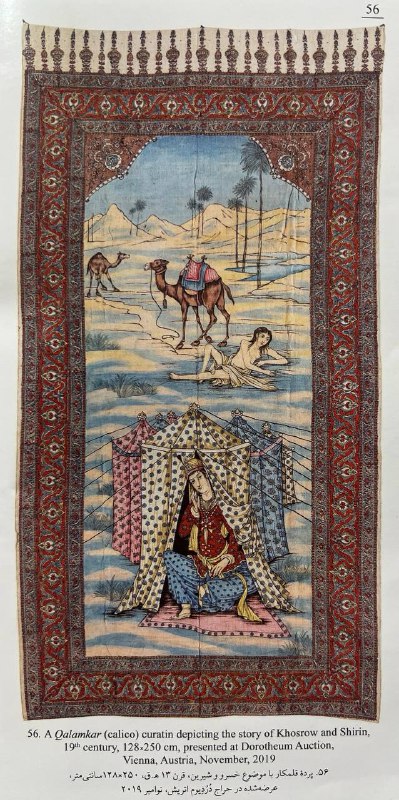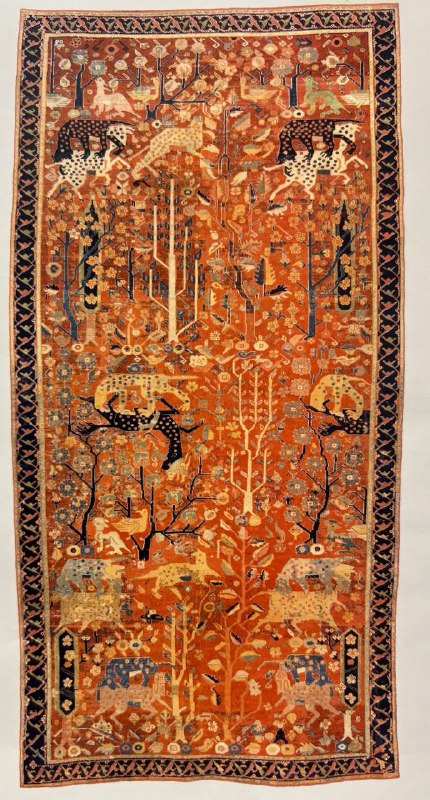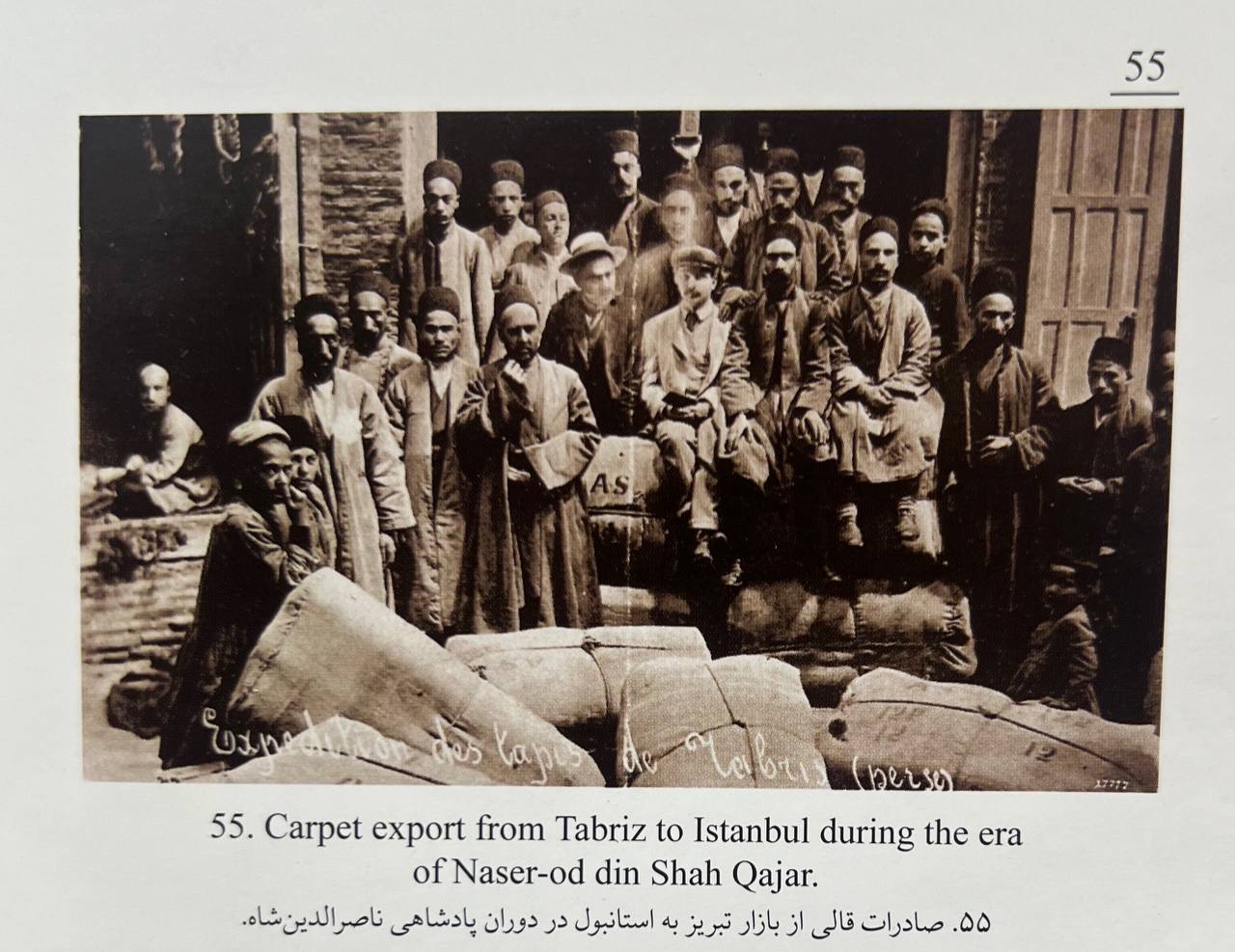The evolution of persian carpet in Qajar period
Since 1794, with the beginning of the reign of Aqa Mohammad Khan Qajar, who was the founder of the Qajar dynasty, a new chapter has gradually been emerged in the history of Persian carpets.
Despite several battles and chaotic conditions during the early years of Qajar dynasty, the persian carpets left over from this period also indicate the continuation of the persian carpet- weaving tradition and the era of Fath-Ali Shah Qajar marked an important birth for both art and industry.(The evolution of persian shop carpet in Qajar period)

With the rise of Fath-Ali Shah Qajar to power in 1798, many significant industrial changes occurred, the achievement of which was due to the efforts of Abbas Mirza, the crown prince and the fourth child of Fath-Ali Shah.(The evolution of persian carpet in Qajar period)
He took many steps to make Iran more advanced, the most important of which was sending some young people to England to learn new sciences and techniques, as well as inviting European artisans to Iranian carpet. From the beginning of Fath-Ali Shah’s rule until the end of the Qajar dynasty, five important effective historical events took place:
1. Setting up the very first printing house in 1824 by order of Abbas Mirza. By printing books or even single pages, for the first time ever, images, motifs and different collections of designs and ideas were accessible to weavers and designers. This way, in addition to the introduction of a new movement in some of the long- established traditions of Persian carpet weaving (such as pictorial designs), new initiatives such as size and the term of pardeh-ei (curtain-like) were also introduced into the art of Persian carpet-weaving .(The evolution of persian carpet in Qajar period)
In fact, with the publication of images of various arts such as qalamkar (calico) fabrics, etc., new ideas emerged in the methods of depicting persian carpets that was unprecedented .

2.During the reign of Naser-od Din Shah Qajar carpets were being exported to foreign countries. At this time, Persian carpet officially entered different countries in Europe and America .
3-For the first time since Naser-od Din Shah’s reign, ink and synthetic dyestuffs were imported from other countries. As the economic importance of the export market increased in the late 19th and early 20th centuries, widespread adaptation of traditional designs, dimensions, and palettes, especially was undertaken to meet the requirements of foreign consumers.

4- As the export of Persian carpet began, European and American companies re-acquired a taste for the exotic refinement of the Oriental carpet, and their importers soon established headquarters in the new Persian centers of production in around 1901, and they began to influence the style and quality of the rugs to make them more attractive to western clients.
This period that lasted nearly three decades, witnessed a revival of Persian rug production that often equaled or at least came close to the great Persian carpets of the classical era and in terms of quantity, far exceeded the production of earlier times.(The evolution of persian carpet in Qajar period)
However, in 1935 by order of Reza Khan Pahlavi, all activities of foreign companies in Iran were stopped. He founded an Iranian state-owned company, called Iran Carpet Company, and brought carpet weaving under government control.

5. If the beginning of the export of Persian carpets is considered as the first important event of the 140-year period of Qajar dynasty, the publication of the first book on persian carpet with the aim of opposing synthetic aniline dyes should undoubtedly be considered the second important historical event of Persian carpet in this period. In fact, the publication of this book should be considered the first and last official confrontation of the government with this destructive phenomenon in Iran, which was never repeated.(The evolution of persian carpet in Qajar period)

This book entitled tejarat-e qali-e-rangin be rang-e-johari (the trade of aniline-dyed carpets) was printed in 1914, during the era of Ahmad Shah and Hasan Mostowfi-al Mamalek as the prime minister, in 35 pages and in both Farsi and French. This book declared the amount of tax on the import of these dyes into the country and the tax on carpets dyed with such materials. This book was the only thing to fight against the use of these dyes in the history of Persian carpet .
There are two other rugs from the same weaver that are almost identical to this one. One of them (which is currently in the Museum of Qatar) has a questionable inscribed date on it. The picture of Nasser-Od Din Shah on the field of this rug combined with the inscribed date raises some questions, since the latter indicates that the carpet was woven long before he was even born.

It would be impossible to see a photo of this rug without the help of Majid Mohammad Panah, the director of Iran persian Carpet Company, but unfortunately the photo lacked printable quality. Thanks to Razi Miri, I was also made aware of the fact that the first- mentioned rug has anilin or other chemical colors in its ground.
